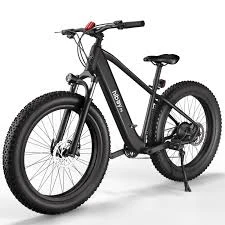
- Afrikaans
- Albanian
- Amharic
- Arabic
- Armenian
- Azerbaijani
- Basque
- Belarusian
- Bengali
- Bosnian
- Bulgarian
- Catalan
- Cebuano
- Corsican
- Croatian
- Czech
- Danish
- Dutch
- English
- Esperanto
- Estonian
- Finnish
- French
- Frisian
- Galician
- Georgian
- German
- Greek
- Gujarati
- Haitian Creole
- hausa
- hawaiian
- Hebrew
- Hindi
- Miao
- Hungarian
- Icelandic
- igbo
- Indonesian
- irish
- Italian
- Japanese
- Javanese
- Kannada
- kazakh
- Khmer
- Rwandese
- Korean
- Kurdish
- Kyrgyz
- Lao
- Latin
- Latvian
- Lithuanian
- Luxembourgish
- Macedonian
- Malgashi
- Malay
- Malayalam
- Maltese
- Maori
- Marathi
- Mongolian
- Myanmar
- Nepali
- Norwegian
- Norwegian
- Occitan
- Pashto
- Persian
- Polish
- Portuguese
- Punjabi
- Romanian
- Russian
- Samoan
- Scottish Gaelic
- Serbian
- Sesotho
- Shona
- Sindhi
- Sinhala
- Slovak
- Slovenian
- Somali
- Spanish
- Sundanese
- Swahili
- Swedish
- Tagalog
- Tajik
- Tamil
- Tatar
- Telugu
- Thai
- Turkish
- Turkmen
- Ukrainian
- Urdu
- Uighur
- Uzbek
- Vietnamese
- Welsh
- Bantu
- Yiddish
- Yoruba
- Zulu
Nov . 25, 2024 21:55 Back to list
power assisted bicycle
Understanding Power-Assisted Bicycles The Future of Cycling
As urban environments evolve and the demand for sustainable transportation increases, power-assisted bicycles, commonly known as e-bikes, are becoming an essential part of modern mobility solutions. These innovative bicycles are equipped with an electric motor that provides assistance to the rider, making cycling more accessible and enjoyable for people of varying fitness levels and commuting needs.
The Mechanics Behind Power-Assisted Bicycles
Power-assisted bicycles are designed to enhance the cycling experience without replacing the traditional elements of riding a bike. At the heart of an e-bike is its electric motor, which can be located in the hub of the front or rear wheel, or in the frame itself. This motor provides propulsion assistance when the rider pedals, allowing for less strain during climbs or longer rides.
Most e-bikes also feature a battery that powers the motor. Battery capacity varies widely, influencing the range of the bicycle on a single charge. Typical e-bikes can cover anywhere between 20 to 80 miles before needing a recharge, depending on factors such as terrain, rider weight, and how much assistance is utilized.
E-bikes often come with a variety of settings that allow riders to choose their level of assistance. These settings can typically be adjusted via a control panel located on the handlebars, enabling cyclists to customize their riding experience according to their preference and the demands of the journey.
Benefits of Power-Assisted Bicycles
The rise of power-assisted bicycles can be attributed to several compelling benefits
1. Accessibility E-bikes make cycling accessible to a broader demographic. Individuals who may find traditional cycling physically demanding, such as older adults or those recovering from injuries, can benefit significantly from the assistance provided by e-bikes.
power assisted bicycle

2. Improved Commuting Many cities are increasingly congested, making commuting challenging. E-bikes offer an efficient and nimble alternative to cars, allowing riders to navigate through traffic and reach their destinations faster, while also saving on parking fees.
3. Environmental Impact E-bikes produce little to no emissions compared to cars, contributing to reduced air pollution in urban areas. By promoting cycling, cities can combat climate change and encourage sustainable transportation habits among their residents.
4. Health Benefits While e-bikes provide motor assistance, riders still get physical exercise, albeit at a reduced intensity compared to traditional cycling. Studies have shown that e-bike users are more likely to maintain a consistent cycling routine due to the reduced physical barriers, leading to improved cardiovascular health and fitness levels over time.
5. Cost-Effectiveness While the initial investment in an e-bike can be higher than that of a traditional bicycle, the long-term savings on fuel, maintenance, and parking can offset these costs. Moreover, many governments offer incentives or subsidies for purchasing electric bikes, further enhancing their affordability.
Challenges and Considerations
Despite the numerous advantages of power-assisted bicycles, some challenges remain. Safety is a significant concern, as e-bike riders may feel emboldened to ride faster or take risks not typically associated with traditional cycling. Thus, education on safe riding practices is crucial.
Additionally, the infrastructure for e-bikes is still developing in many areas. Proper bike lanes, charging stations, and public policies tailored to accommodate e-bike riders are necessary to encourage even wider adoption.
Conclusion
Power-assisted bicycles represent a remarkable fusion of technology and tradition, standing at the crossroads of transportation innovation and environmental stewardship. As cities continue to face the challenges of congestion and climate change, e-bikes offer a practical and sustainable solution for commuting and leisure. With ongoing advancements in technology and growing societal acceptance, it is evident that the future of cycling lies in embracing these electric companions on two wheels.
-
The Ultimate Kids' Four-Wheeler Experience
NewsJul.09,2025
-
The Ultimate Guide to Mountain Bikes: Gear Up for Your Ride
NewsJul.09,2025
-
The New Age of Cycling: Electric Bikes for Every Rider
NewsJul.09,2025
-
The Best Kids Bicycles: Ride in Style and Safety
NewsJul.09,2025
-
The Best 3-Wheel Scooters for Kids: Fun, Safety, and Adventure
NewsJul.09,2025
-
Revolutionize Your Ride: Affordable Electric Bikes
NewsJul.09,2025
-
Finding the Perfect Mountain Bike for Every Rider
NewsJul.09,2025



